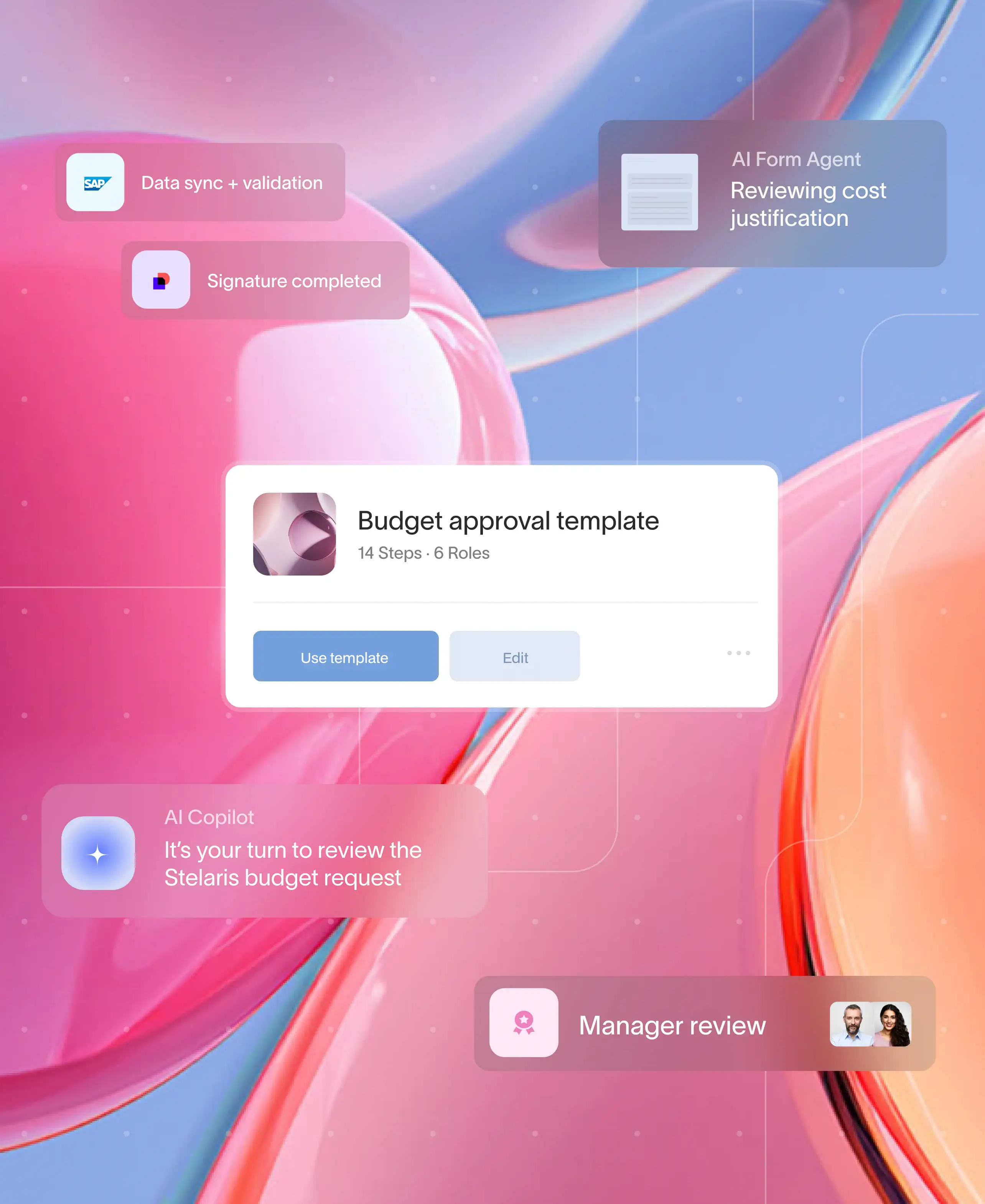%20(1).png)
In today's fast-paced business environment, setting up efficient processes is more critical than ever. Businesses that streamline operations, reduce redundancies, and ensure smooth workflow transitions are more likely to succeed. This is where business process orchestration comes into play. By integrating and managing various business processes seamlessly, organizations can achieve higher efficiency, improved outcomes, and a more agile response to changing market conditions.
What is business process orchestration
Business process orchestration involves coordinating and managing different tasks, processes, and systems within an organization to ensure they work together efficiently. Unlike simple automation, which focuses on individual tasks, orchestration takes a broader view, ensuring that multiple processes are aligned, integrated, and optimized to achieve business goals.
In essence, business process orchestration acts as a conductor in a symphony, ensuring that every instrument (or process) plays its part at the right time, creating a harmonious outcome. This holistic approach goes beyond the automation of repetitive tasks, integrating human, technological, and process elements to create a seamless workflow.
Examples of business process orchestration
Order fulfillment

In a retail environment, process orchestration can streamline order fulfillment by integrating inventory management, customer service, and shipping processes. This ensures that orders are processed quickly and accurately.
Customer onboarding

In the financial sector, orchestrating customer onboarding processes can improve the experience by integrating CRM, compliance checks, and account setup processes, reducing the time it takes to onboard a new customer.
HR processes

Orchestration can streamline HR processes such as recruitment, onboarding, and payroll management by integrating various HR systems and ensuring a smooth flow of information.
Why should businesses pursue process orchestration
Pursuing business process orchestration offers several compelling advantages:
- Enhanced efficiency: By coordinating different processes, organizations can eliminate bottlenecks, reduce redundancies, and streamline operations. This leads to faster and more efficient workflows.
- Improved agility: In a dynamic business environment, the ability to quickly adapt processes to changing conditions is crucial. Business orchestration enables reconfigure workflows on the fly, ensuring they remain competitive.
- Better decision-making: Orchestrated processes provide a holistic view of operations, enabling better-informed decisions. With all processes interconnected, data flows smoothly across the organization, offering insights that can drive strategic decisions.
- Cost reduction: By optimizing processes and eliminating inefficiencies, businesses can significantly reduce operational costs, freeing up resources for other critical areas.
- Compliance and risk management: Orchestration ensures that all business processes adhere to regulatory requirements and internal policies, reducing the risk of non-compliance and associated penalties.
Orchestration vs. automation
While automation and process orchestration are often used interchangeably, they refer to different concepts.
Automation focuses on the execution of individual tasks or processes without human intervention. It is about making specific tasks run automatically, often to increase speed or reduce errors.

Process orchestration, on the other hand, involves coordination of multiple automated processes and tasks across various systems and departments. It’s about ensuring that these tasks work together in harmony to achieve broader business objectives. For example, automating the process of generating invoices is automation; ensuring that this process is integrated with customer relationship management (CRM), financial systems, and inventory management is orchestration.
Transformative benefits of business process orchestration
The outcomes of effective business process orchestration can be transformative for organizations:
- Seamless workflows: With processes interconnected and aligned, workflows become smoother, reducing the time and effort needed to complete tasks.
- Enhanced collaboration: Orchestration bridges the gap between different departments and teams, fostering collaboration and ensuring everyone is working towards the same goals.
- Increased innovation: By freeing up resources and reducing operational burdens, businesses can focus on innovation, driving new products, services, and business models.
- Improved customer experience: With streamlined processes, customer interactions become more efficient, leading to higher satisfaction and loyalty.
Steps to launch effective process orchestration
Starting with process orchestration requires a strategic approach with multiple steps:
- Identify key processes
- Assess current workflows
- Choose the right tools
- Implement and monitor
- Continuous improvement
- Identify key processes: Begin by mapping out critical processes that need orchestration. Focus on those that impact business outcomes the most.
- Assess current workflows: Evaluate existing workflows to identify inefficiencies, bottlenecks, and areas where processes can be better integrated.
- Choose the right tools: Selecting a robust business process orchestration platform is crucial. Look for tools that offer flexibility, scalability, and integration capabilities.
- Implement and monitor: Once the right business process orchestration tools are in place, implement orchestration gradually. Monitor the outcomes, gather feedback, and make necessary adjustments.
- Continuous improvement: Orchestration is not a one-time task. Continuously assess and refine processes to adapt to changing business needs.
How Moxo can help in business process orchestration
Moxo offers a comprehensive platform designed to streamline business process orchestration. With Moxo, businesses can:
- Integrate various systems: Moxo’s platform enables seamless integration of different business systems, ensuring all processes work together efficiently.
- Automate workflows: While focusing on orchestration, Moxo also offers robust automation capabilities, ensuring repetitive tasks are handled without manual intervention.
- Enhance collaboration: Moxo’s client portal solution fosters collaboration across departments, ensuring that everyone is on the same page.
- Provide end-to-end visibility: Moxo’s platform offers real-time insights into processes, enabling better decision-making and continuous improvement.
Conclusion
Business process orchestration is no longer a luxury but a necessity for organizations looking to stay competitive in today’s dynamic environment. By coordinating various processes, businesses can achieve higher efficiency, better outcomes, and improved agility. Platforms like Moxo provides the capabilities needed to successfully implement and manage process orchestration, driving innovation and growth. Visit Moxo to get started today.
FAQs
What is the difference between business process orchestration and automation?
Automation focuses on executing individual tasks without human intervention, while orchestration coordinates multiple automated processes to achieve broader business objectives.
How does business process orchestration improve efficiency?
By eliminating bottlenecks and streamlining workflows, orchestration ensures that all processes are aligned, reducing the time and effort needed to complete tasks.
How can businesses maximize the benefits of business process orchestration?
To fully leverage business process orchestration, businesses should focus on continuous assessment and improvement of their processes. It's essential to regularly evaluate the effectiveness of orchestration efforts, refine workflows to adapt to changing needs, and ensure that all teams are aligned with the organization's broader objectives. Investing in training and fostering a culture of collaboration will also help maximize the benefits of orchestration.
What are the first steps to implementing process orchestration?
Start by identifying key processes, assessing current workflows, choosing the right tools, and gradually implementing orchestration while monitoring outcomes.
How can Moxo assist in business process orchestration?
Moxo provides a platform to integrate various systems, automate workflows, enhance collaboration, and offer end-to-end visibility, making process orchestration more accessible and effective.





